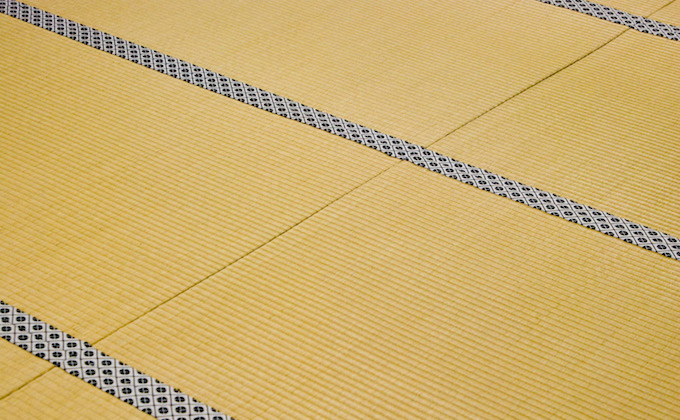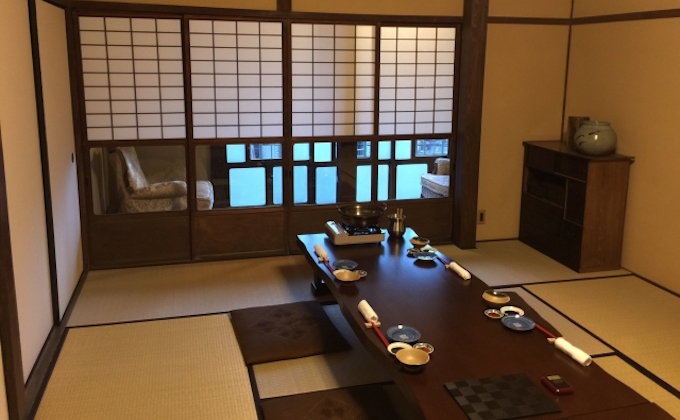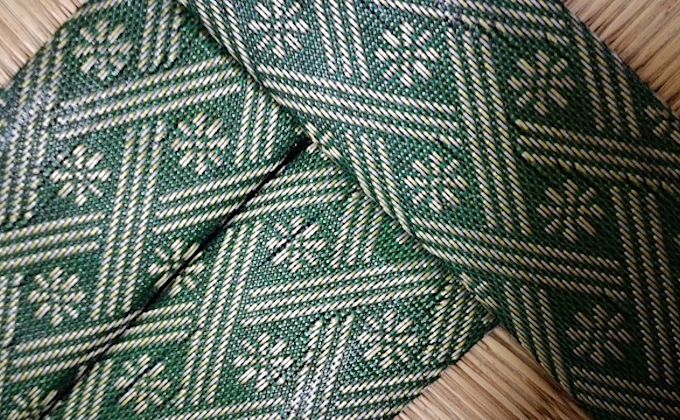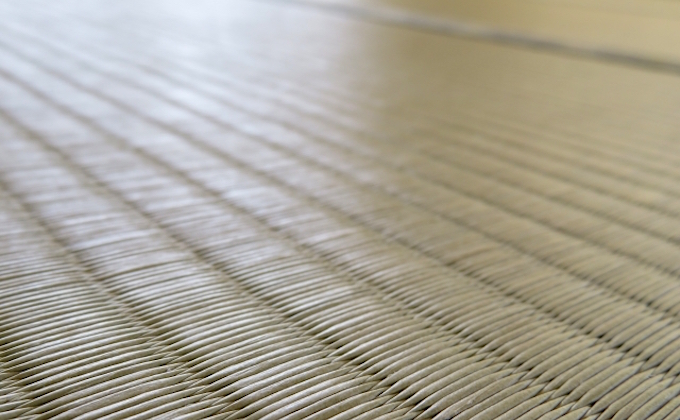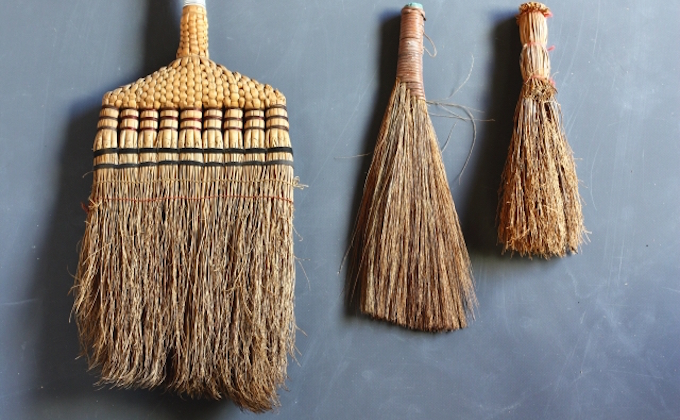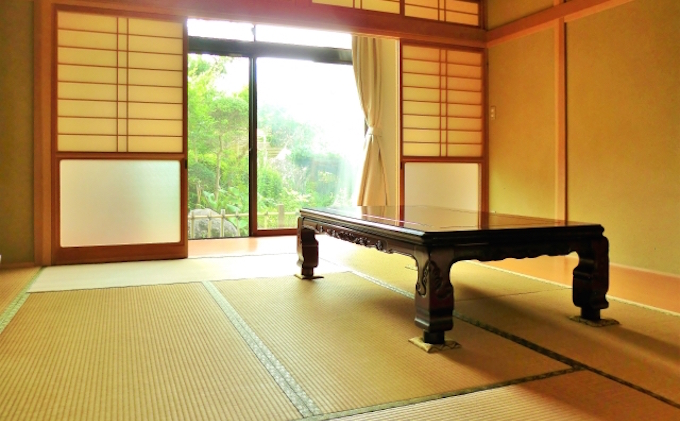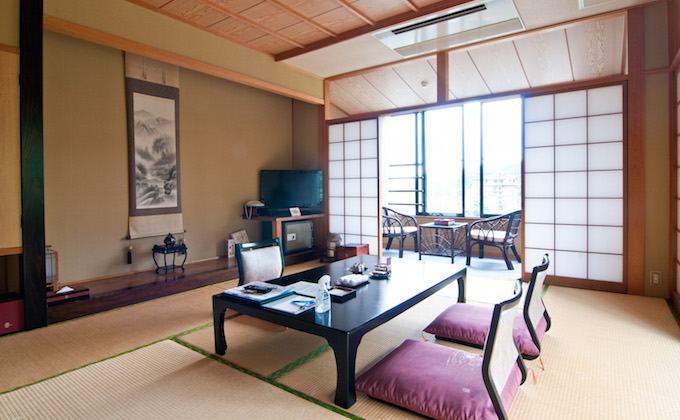TRG Info and Advice
The Scoop on Washitsu and Tatami
For the full Japanese dining experience, opt for the washitsu!
In a restaurant, the washitsu is a traditional, Japanese-style room usually furnished with low tables and tatami mats. These rooms often can be easily divided into smaller areas, or enlarged to accommodate big parties. Tables can be arranged according to your needs and the number of people. With its flexibility to be cozy or airy, you can rarely go wrong with the washitsu. The tatami flooring is comfortably firm, but small cushions are usually provided, and you will be expected to sit down at a low table to consume your meal. Shoes, of course, and even house slippers, are forbidden on tatami. Wearing only your socks and avoiding stepping on the cloth edges, grab a cushion (if they are not already placed around the table) and sit down on your knees with your feet under you, or on your bottom with your legs crossed. Once the meal has progressed, it is perfectly acceptable (for foreigners, especially) to stretch your legs out under the table while apologizing profusely for your rudeness.
A Disappearing Craft?
Tatami are thick floor mats made from a woven layer of dried rushes wrapped around a rice straw, Styrofoam or wood chip core-filling. A ribbon-like cloth in a wide variety of colors and patterns covers the ends. Japanese homes, even modern ones, often have at least one washitsu (Japanese-style room). Bedrooms usually have tatami because Japanese futons are not too thick, and are meant to be used on tatami’s springy surface. This said, tatami makers are facing a dilemma: they are growing older, and there is no one to continue the business. Supposedly, the demand for tatami has gone down by one-to-two thirds in the past twenty years. Traditional Japanese homes usually have a large space that was once used for hosting important life events. Removable doors and tatami flooring can easily accommodate many guests for weddings, funerals, commemorative ceremonies, and other gatherings. With tatami, you don’t have to worry about chairs, either. Nowadays, however, people rent ceremony halls for funerals, and have wedding receptions at hotels instead of at home.
Green Tea Magic
So, why, if tatami are so great, are they losing popularity? Some of the younger generations think tatami are a pain to care for, irritate allergies, and have an offensive odor. True, tatami need a little maintenance, but not much more than other types of flooring. To clean, just wipe with a dry cloth. During the especially wet months, you may get a fuzzy layer of mold. Here is a fun, and fresh-smelling way to take care of that problem: green tea leaves! Take some used tea leaves and spread them out in a basket or tray, letting them dry a little so that they are damp, not soaking. Now, take the semi-dried tea leaves and toss them all over the tatami mats. Using a soft broom, sweep up the tea leaves, following the grain of the tatami. Dust and mold stick to the damp leaves and are easily swept up, and green tea has a natural antiseptic element which helps protect the tatami from mold and other vermin. Plus, you have a great, green-tea smell in the room!
Tatami can be easily damaged by tables, chairs and other heavy furniture, so placing a small piece of cardboard as a layer can help prevent permanent indentations. Rotating the tatami every now and then can keep them fresh, and reduce the natural fading of color due to sunlight exposure. Wipe up spills as quickly as possible and try not to leave wet towels or clothes lying on them. Care for your tatami properly and they will last many years, mellowing from a young spring green to a golden yellow. Changing just the surface of the tatami is possible, preferably every four to five years. Apartment owners will often provide this service when occupants change and may replace all of the mats every ten or fifteen years.
Unit of Measurement
Tatami have been in Japan for about a thousand years, and are used as a standard unit of measurement. Those seeking an apartment or condo will have to have a clear image of the size of one tatami mat as the apartment lay-out will be described using the unit “jo,” which refers to one 90cm X 180cm (usually) tatami mat. Even farm land is measured with a unit size of two tatami mats.
Nostalgic Future?
Dried rushes smell of sunshine and outdoor freshness, a scent which is enhanced during the summer months and may prove nostalgic for a lot of Japanese people who visited the countryside during their childhood. The image of tatami as a part of Japanese culture is ingrained in many foreigners, as well. When asked whether they preferred a western style or Japanese style room for the Olympic Village in Tokyo at the 2020 Olympics, an overwhelming majority said “Japanese style, please!” What a great chance to revitalize the economy of traditional crafts, and remind the younger generations of the beauty of tatami!






